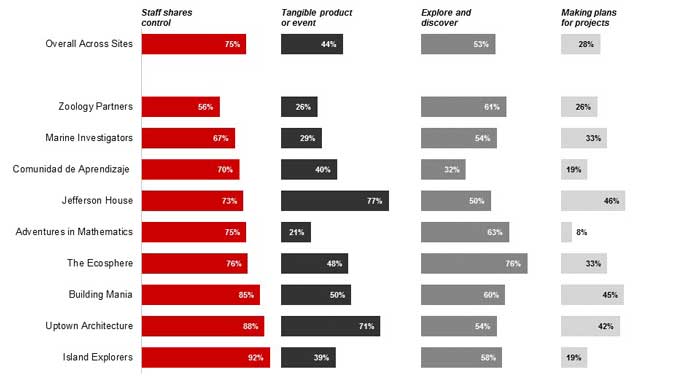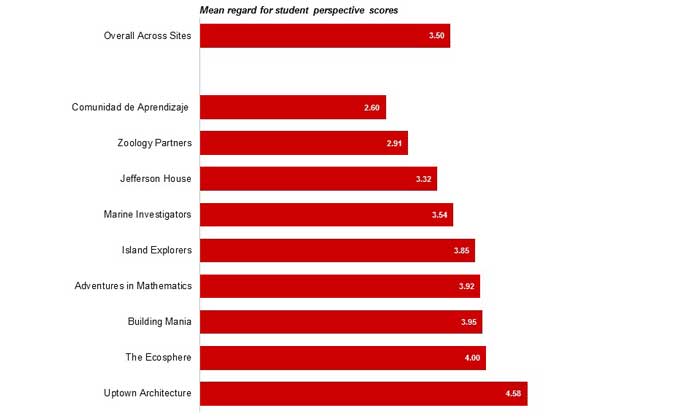- STEM IE
- Supporting Youth Agency
- Research Findings
Stem IE Research Findings
The
Figure 1. Activity Leaders sharing control of activities with youth and youth participating in activities that allow them to explore and discover new things on their own were the two most common agency-related practices observed in study programs.
The majority of 15-minute video segments observed were characterized by the presence of these practices. Youth participating in activities that will eventually lead to the creation of a tangible product or culminating event or where they made plans for projects or activities were less commonly found to be associated with observed activity segments. In addition, in some cases, there were some important differences in how a given practice was being implemented. For example, although more than 70% of observed segments at both Uptown Architecture and Jefferson House involved the creation of a tangible product, at Uptown Architecture the product in question was an outdoor classroom space designed and constructed by participating youth. However, at Jefferson House, such activities involved things like following a recipe to bake a dish or dessert. Although both resulted in a tangible product, the former involved substantively more skills and effort than the latter example.

An important component of providing youth with opportunities to experience a sense of agency involves being sensitive to youth perspectives while providing the scaffolding and support needed to promote youth autonomy.
Figure 2. Programs varied in terms of the degree to which activity leaders demonstrated regard for
This dimension of CLASS (the program quality observation tool used in the study) focuses on the degree to which STEM activities and activity leaders are responsive to youth interests, motivations, and points of view and promote youth autonomy. Rated on a scale of 1 to 7, most programs averaged in the mid-range of the scale. Of some interest was that two of the higher scoring programs on average were very different from each other, with Uptown Architecture focused on empowering youth to design and construct an outdoor classroom space while Adventures in Mathematics was predicated on building the basic math skills of partiv=cipating youth. In this sense, these practices can be universally applied irrespective of activity type.

When program leaders employed these agency-supportive practices, youth reported being more challenged and engaged in the activity at hand. Both males and females reported feeling more control when leaders used agency supportive practices, but females reported feeling less control than males in all situations. This result is consistent with findings from many other studies.
On the post-survey, youth were asked to reflect on the extent to which they had the opportunity to participate in different agency-related practices during their time in the program (e.g., Can you suggest your own ideas for new activities? Do you get to help plan activities for the program?). Youth who reported having more control when
Interviews with ALs indicated that many of them believed strongly in supporting youth agency. On the other hand, some ALs also said that they struggled quite a bit with it. They mentioned how difficult it was to turn over control to middle school students and keep them from veering off task. The next section provides some ideas for how to support youth agency while maintaining their engagement.